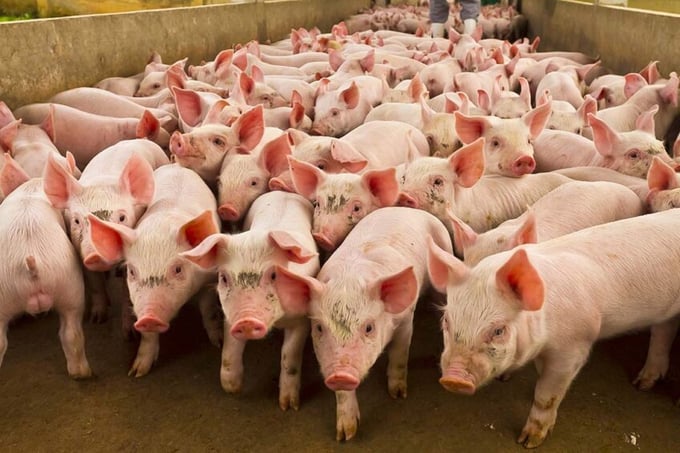November 25, 2025 | 16:00 GMT +7
November 25, 2025 | 16:00 GMT +7
Hotline: 0913.378.918
November 25, 2025 | 16:00 GMT +7
Hotline: 0913.378.918

Photo: Canva
Ongoing equity losses in the US swine industry are estimated at about US$ 100 million every week. Cutting supply is the only option in order to drive up prices. A new report from Rabobank concurs.
The US swine industry is already making cuts. The current sow herd is estimated to now be below 6 million, a number that has not been breached for many decades. At the same time, US Department of Agriculture (USDA) data is showing that farrowings dropped 4% in the last part of 2023, but piglets per litter were up 4%. The industry currently trims farrowings by 2%.
However, 2 well-known industry experts now identify another long-term challenge to the US swine industry. Economists Dr Lance Mulberry (guest of a new Pig Progress ‘Meet the Expert’ podcast) and his colleague Dr Dennis Dipietre at KnowledgeVentures, have recently noted that the historically high and stable US pork exports to China, South Korea and Japan are dropping away. These 3 countries make up 3 of the 4 top US pork export markets, with only Mexico ahead of them.
The Chinese population has declined (mainly due to the ‘One Child’ policy) ahead of “even the most pessimistic estimates,” stated Mulberry and Dipietre in a recent US news story. In addition, populations in China, Japan and many other countries have dropped, and continue to decline, because women aren’t choosing to have children for a variety of reasons.
Besides population declines in these countries and beyond, aging populations also have less disposable income to spend on meat, and eat less meat in general than younger individuals.
Mulberry and Dipietre stated that while it would be impossible to estimate what precise impact decreasing exports to these three countries will have on the US pork industry over time, there will likely be “a permanent decrease in value of anywhere from $ 2.51 to $ 25.31 per head finished by 2050.”
At the same time, however, these 2 economists believe that data analytics are going to help the industry make profit in years to come, starting as soon as this year. The enormous amount of data produced on farms, mostly unused until now or used for very specific purposes such as deciding when to change the ration, can help producers immensely in cutting costs and achieving much more efficiency.
Mulberry and Dipietre believe efficiencies from data analysis this year could gain producers $ 25 to $ 75 per head finished.
(PP)
/2025/11/24/3616-2-141832_513.jpg)
(VAN) FSC certification has helped increase the value of thousands of hectares of planted forest timber under the management of the Xuan Loc Protection Forest Management Board, particularly in terms of selling prices.

(VAN) More than 100 shoppers queued for a chance to get a kilo or so of Japanese rice for 500 yen ($3.32) by heaping as much grain into a small wooden box as possible.

(VAN) Benchmark international prices of milled declined in October as harvests started or improved in some parts of the globe.

(VAN) Show cause orders will be issued to retailers who sell imported rice at prices exceeding the maximum suggested retail price (MSRP) of P43 per kilo, Philippines Agriculture Secretary said in a statement on Thursday.

(VAN) Coffee prices on October 20, 2025, remained stable domestically, trading at 113,500–114,500 VND/kg. Similarly, global coffee prices also moved sideways.

(VAN) By October, Vietnam’s coffee exports had surpassed USD 7 billion for the first time and will exceed USD 8 billion within this year.

(VAN) Illinois rancher says Texas, Oklahoma, Kansas lost grass and forage, forcing massive cattle liquidation.